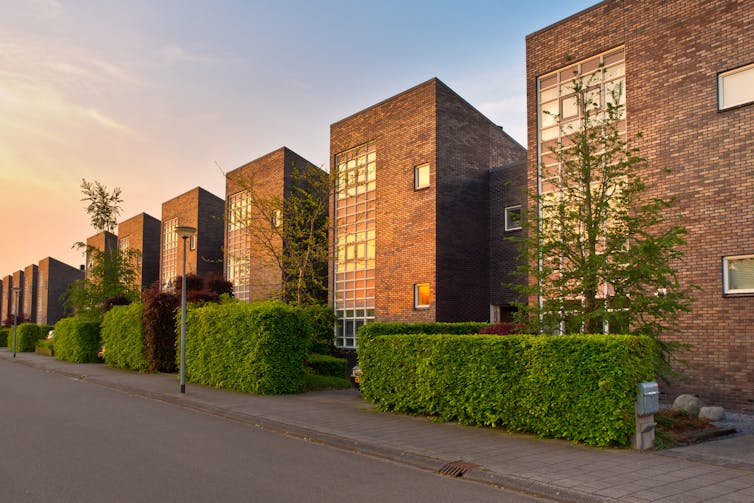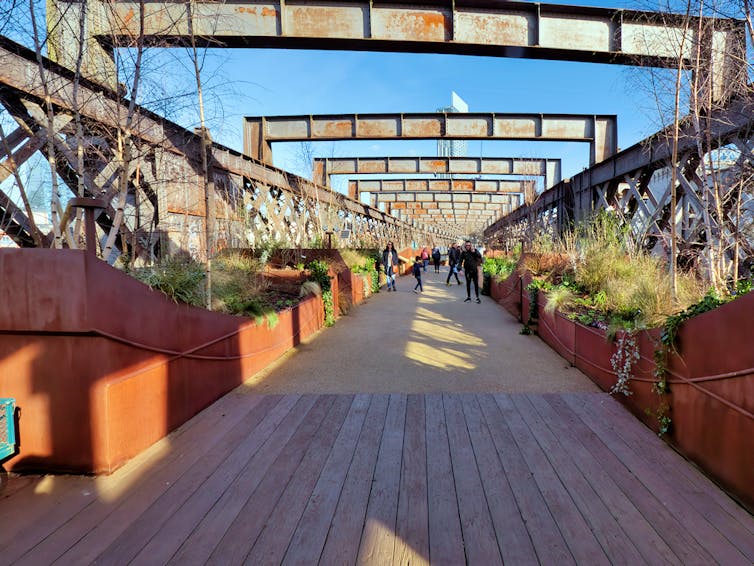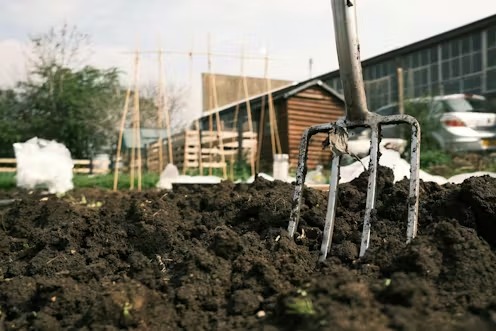Amid the growing local government bankruptcy crisis, as many as half of the local authorities in England and Wales might be forced to cut their green spaces budgets. The situation in Scotland and Northern Ireland is not much better. A survey by the Local Government Association in February 2024 found that 48% of local authorities say they plan to defund, to varying degrees, the parks and other green spaces within their areas.
England’s urban green spaces alone are estimated to provide up to £6.6 billion in benefits to the communities that use them each year. Yet using them isn’t open to everyone.
There is significant social inequality in terms of access to urban green spaces. In December 2023, the Environment, Food and Rural Affairs parliamentary committee heard evidence that the most affluent 20% of urban wards have as much as five times more publicly accessible green space that the most deprived wards.
Urban green spaces have long been poorly funded and vulnerable to local government budget cuts. The question then is how to create more inclusive and sustainable green spaces in our cities.

Green space needs to be built into new urban designs. Rudmer Zwerver/Shuttertstock
Urban green space under threat
After Birmingham city council effectively declared bankruptcy in 2023, it voted on a series of budget cuts amounting to £300 million. All non-statutory spending was frozen, which included funding for parks, gardens and other green assets.
The Save Birmingham lobbying group was subsequently set up to create an index of assets of community value. The idea, in the long term, is to find co-operative models for running these important spaces.
The 2023 State of Nature report (produced by a consortium of conservation and research organisations) highlights the UK as “one of the most nature depleted” countries on Earth. It reveals shocking levels of decline between 1970 and 2019 in plant distribution across England, Scotland, Wales and Northern Ireland, including 54% for certain flowering plant species and 59% for Bryophytes (which includes mosses and liverworts). As part of a wider solution, the report states that “the greening of urban spaces” is a priority, particularly with housing and broader building targets increasing.
The value, in economic and social wellbeing terms, of urban greening is incontrovertible. Natural England, a government advisory body, shows how city parks, community gardens, playing fields and other urban sites were the most visited type of green space in England. Indeed, living within 100 metres of such an area can raise house prices by an average of £2,500.

Manchester’s Castlefield Viaduct has transformed an abandoned elevated railway into a community garden. David Dixon/Wikimedia, CC BY-SA
Research has long demonstrated the immense potential of scaling up innovative urban greening within our cities. Public health experts estimate that green social prescribing – which the NHS defines as encouraging people to spend time in nature to improve physical and mental health – could save up to £300 million and lead to 4.5 million fewer GP appointments each year in England alone.
Urban greening could also help to meet urban food demands. A 2020 study in New York showed that rooftop farming could supply 38% of the city’s leafy green needs.
Green developments
In the UK, legislation to boost the country’s biodiversity was introduced in early 2024. This aims to enhance the natural habitat of new developments by ensuring that they contribute to a minimum 10% uplift in terms of the quality of the local natural habitat.
Our research shows this could really make a difference. New-build estates in and around urban agglomerations are often characterised by large areas of hard landscaping and a lack of creative design around their environmental features.
The new legislation should ensure a change in landscaping practices. Instead of expanses of impermeable hard surfaces, architects could opt for permeable vegetated surfaces, that could still take the weight of parked vehicles. Green roofs could be encouraged on flat-roofed structures, such as garages or common areas. Timber, concrete and wooden fences could be replaced by hedges using native species.
Healthy hedgerows can provide shelter for wildlife. They protect the soil and contribute to flood control. Ambitious developers may even consider using native species, including productive edible hedges with sloes, elders, damsons, apples and similar species.
Community orchards are another creative way to improve the green spaces new-build developments provide. A range of organisations already champion this approach. City of Trees in Greater Manchester, has created more than 141 orchards, planted 1,612 street trees and enabled 6,009 metres of hedgerow.
With the general election underway, all parties are backing the need for more housing. The Local Government Association argues that England alone needs 250,000 more houses a year, more than double the 130,000 currently being built. The National Housing Federation, meanwhile, says that’s nowhere near enough – it argues the target should be closer to 340,000.
But it’s not just numbers that count. The push towards sustainability has meant places including Birmingham and Manchester are seeing a return to high-rise towers. Landscaping and food growing have been an afterthought.
City residents need their leaders to think creatively about both the nature of the new housing (building types, estate layouts and densities) and where it’s located. There are plenty of green champions to emulate, including Social Farms & Gardens, with its support for city farming and community growing at a national level, to Sow the City which works with housing providers and others to enable creative greening. The National Trust’s Castlefield Viaduct project in Manchester is a prime example of how even ageing industrial assets can be transformed into havens for nature.
Housing developments last for decades. The garden cities of a century ago are now mature, green pleasant and high-value places. If today’s new developments don’t follow suit, they runs the clear risk of becoming the slums of the future.



 Sharehousing can be fun, but fraught with risk – and the law offers little protection. These 3 changes could help
Sharehousing can be fun, but fraught with risk – and the law offers little protection. These 3 changes could help  How a hybrid heating system could lower your bills and shrink your carbon footprint
How a hybrid heating system could lower your bills and shrink your carbon footprint  A ‘sponge city’ may be your home in 2050
A ‘sponge city’ may be your home in 2050  Use of AI in property valuation is on the rise – but we need greater transparency and trust
Use of AI in property valuation is on the rise – but we need greater transparency and trust  영국 대형 투자자들, 미국 부동산 가격 하락 시 매수 준비
영국 대형 투자자들, 미국 부동산 가격 하락 시 매수 준비  Debunking myths about community housing: What governments and the public should know
Debunking myths about community housing: What governments and the public should know 

































